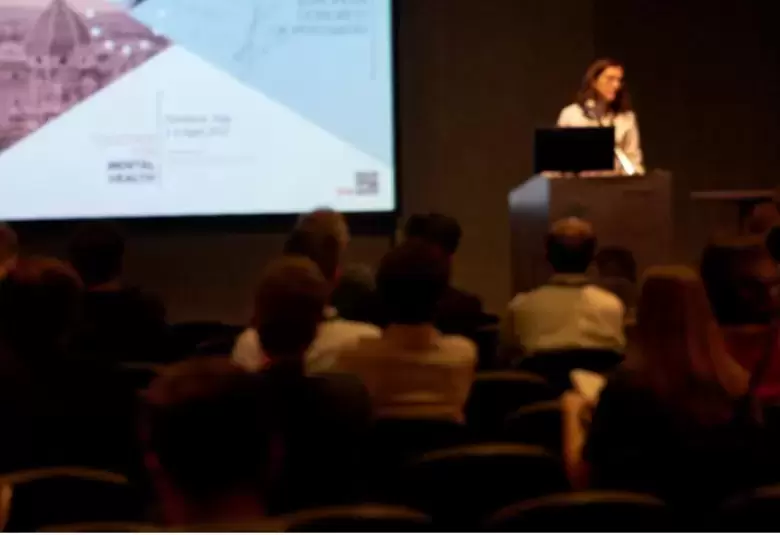Mutations in several genes contribute in differing degrees to the causation of PD. But the gene variants with the strongest influence are relatively rare, their impact differs greatly between populations, and environmental factors clearly also play a part in a complicated interaction.
몇몇 유전자에 돌연변이가 생기면 파킨슨병(PD)을 일으키는데, 각 유전자별 PD에 미치는 영향력은 다를 수 있습니다. 하지만 PD 발병에 크게 영향을 주는유전자 변이는 드물며, 인종별로 각 유전자 변이가 PD에 미치는 영향력이 다르고, 환경적 요소들 또한 이 복잡한 PD 결정인자간 관계의 한 부분을 차지합니다.
A small number of gene mutations strongly predispose a person to develop Parkinson’s Disease (PD). Mutations of PARK8-LRRK2 or the gene encoding the lysosomal enzyme glucocerebrosidase (GBA) are examples. Mutations of genes like these may be necessary for the disease, but are generally not sufficient.
파킨슨병(PD)의 진행에 중요하게 작용하는 돌연변이가 몇몇 있는데, 예를 들어 PARK8-LRRK2의 돌연변이 또는 리소좀 효소인 글루코세레브로시다제(glucocerebrosidase: GBA)를 암호화하는 유전자 등이 있습니다. 이와 같은 유전자들의 돌연변이가 PD를 일으키는 데에 반드시 필요하지만, 일반적으로 유전자 변이가 있다는 것만으로 PD가 발생한다고 보기는 어렵습니다.
Inherent risk is modified by many other genetic factors with a relatively weak influence, such as are revealed by genome-wide association studies. Risk is also influenced by environmental factors. And by events such as the misfolding of alpha synuclein, which can occur as a sporadic event but may itself be environmentally or genetically driven.
전유전체 연관성 연구(GWAS, genome-wide association studies)의 결과처럼, 내재적 위험은 상대적으로 영향력이 약한 다른 여러 유전인자들에 의해 달라질 수 있습니다. 또한 이러한 위험은 환경인자의 영향도 받고, 드물게 발생하지만 환경적 혹은 유전적 동인에 의해 유도될 수도 있는 알파-시누클레인(alpha-cynuclein)의 접힘 이상(misfolding)과 같은 요인들의 영향을 받습니다.
The varying interaction of these influences gives rise to the range of PD phenotypes that we see. And the involvement of many factors may explain why – despite a strong genetic background – PD has a relatively late onset.
여러 인자들의 다양한 상호작용은 PD의 표현형 역시 달라지게 합니다. 그리고 여러 요인들이 관여한다는 사실을 통해 유전적 요인이 PD 발병에 강하게 작용함에도 불구하고 PD가 상대적으로 늦은 나이에 발병하는 이유를 알 수 있습니다.
This was the model presented by Vincenzo Bonifati, of the Erasmus Medical Center in Rotterdam, the Netherlands, at the recent conference James Parkinson – An Essay on the Shaking Palsy 1817: A Celebration of 200 Years of Progress, organised by the International Parkinson and Movement Disorder Society (MDS).
파킨슨병 연구는 James Parkinson이 1817년에 <진전마비에 대한 에세이 (An Essay on the Shaking Palsy 1817)>를 발표하면서 시작되었습니다. 최근 국제 파킨슨병 및 운동장애 학회(MDS)가 파킨슨병 연구 200주년을 기념하여 학술대회를 주최하였습니다. 본 학술대회에서 네덜란드 로테르담 에라스무스 의료센터의 Vincenzo Bonifati가 제시한 모델에는 PD발병과 관련된 여러 요인들이 잘 드러나 있습니다.
Proof of principle
원리 증명
The discovery of PARK1-alpha-synuclein proved the principle that there are monogenic forms of PD and strongly implicated the protein in pathogenesis. PARK8-LRRK2 mutations – especially Gly2019Ser – and variants of the GBA gene are examples of more frequent mutations with low penetrance overall that are strong risk factors for PD.
PARK1-알파-시누클레인(PARK1-alpha-synuclein)의 발견으로, 여러 형태의 단일 유전성 PD가 있다는 사실을 알게 되었으며, 이 단백질이 발병 기전에 크게 관여한다는 사실이 입증되었습니다. PARK8-LRRK2 돌연변이들(특히 Gly2019Ser)과 GBA 유전자의 변이들은 자주 일어나는 돌연변이의 대표적인 예이며, 전반적으로 발현정도가 낮고 PD발병의 중요한 위험요소입니다.
Up to 30% of people with GBA mutations develop PD by the age of eighty – which represents a 20-30% increase in lifetime risk. GBA mutations are also associated with Lewy body formation.
GBA 돌연변이를 가진 사람들 중 많게는 30%가 80세 무렵에 PD이 발병하는데, 이는 살아가면서 PD이 발병할 확률이 GBA 돌연변이에 의해 20~30% 증가함을 나타냅니다. GBA 돌연변이는 루이소체(Lewy body) 형성과도 관련이 있습니다.
But the genetic architecture of PD varies between ethnic groups. Among the Ashkenazi Jewish population of Israel, who have a relatively homogeneous genetic pool, GBA L444P or N370S mutations were found in 15% of PD patients.1 This was true of only 3% of PD patients from other ethnic backgrounds. Even so, across sixteen co-operating centres worldwide, the presence of any GBA mutation increased the risk of PD five times. And, in terms of its frequency and potential as a therapeutic target, GBA is probably the most important PD-related gene yet discovered.
그러나 PD의 유전적 구조는 인종에 따라 다릅니다. 상대적으로 동질적인 유전자 풀(genetic pool)을 가진 이스라엘의 아슈케나지 유대인들(Ashkenazi Jewish)의 경우, GBA L444P 또는 N370S 돌연변이가 PD 환자들 중 15%에서 확인되었지만1, 그 외 다른 인종인 PD 환자들 중에 그와 같은 돌연변이를 보인 비율은 3%에 불과했습니다. 그렇지만, 전세계 16개 협력센터에서 취합한 관찰 결과에 따르면, GBA 돌연변이가 있을 때 PD 발병 위험도가 5 배 증가하는 것으로 나타났습니다. 유전자 변이의 발생 빈도 및 PD를 치료하기 위한 표적으로서의 가능성 면을 볼 때, GBA는 아마도 지금까지 발견된 유전자 중 가장 중요한 PD 관련 유전자일 것입니다.
GBA mutation is important in determining increased risk of PD but also influences the nature of the disease. In data published recently from a large Italian study, GBA mutation-carriers were more likely than non-carriers to have severe motor disease, and those with certain GBA mutations seemed more prone to develop dementia.2 This was especially so for carriers of severe rather than mild GBA mutations.
GBA 돌연변이는 PD의 발병 위험도가 증가했는지를 결정하는 데 있어 중요할 뿐만 아니라 PD의 특성에도 영향을 미칩니다. 이탈리아인을 대상으로 실시된 한 대규모 연구의 최근 발표 자료에서, GBA 돌연변이 보인자들(GBA mutation-carriers)은 비보인자들보다 중증 운동장애를 가질 가능성이 더 컸으며, 특정 GBA 돌연변이를 보인 사람들은 치매의 발병률도 더 높은 것으로 나타났습니다.2 이러한 경향은 GBA 변이의 정도가 심한 보인자들에게 특히 두드러졌습니다.
A role for the environment
환경의 영향
There are Parkinson’s-like conditions with a clear environmental cause such as encephalitis. There are examples of drug-induced Parkinsonian toxicity, notably that caused by MPTP and proteasome inhibitors; and there is continuing concern about the potential role of certain pesticides in PD itself.
뇌염과 같이 분명한 환경적 원인에 의해 나타나는 파킨슨병 유사 증상들이 있습니다. 약물에 의해 파킨슨병 독성이 나타나기도 하는데, MPTP 및 프로테아좀(proteasome) 억제제에 의한 것이 특징적이며, 몇몇 살충제들은 파킨슨병 자체에도 영향을 줄 수 있는 점에 대해 지속적으로 우려의 목소리가 높습니다.
A recent nationwide study in France related PD incidence at the cantonal level to agricultural activities varying in the intensity of pesticide use.3 People living in cantons with the greatest density of vineyards – where pesticide use is high – had a significantly higher PD risk. The strength of the association increased with age.
최근 프랑스에서 진행된 전국 규모의 연구는, 소지역(canton)† 차원에서의 PD 발생률을 살충제 사용의 강도가 각기 다른 농업활동과 결부시켜 고찰했습니다.3 포도밭에는 살충제가 많이 사용되는데, 포도밭이 굉장히 밀집한 지역에 사는 사람들이 상당히 높은 PD 위험도를 보였습니다. 그 연관성의 정도는 연령이 높아질수록 증가했습니다.
The recent MDS research criteria for prodromal PD attribute a likelihood ratio of 1.5 to regular pesticide exposure, and the same to occupational solvent exposure.
전구성 PD에 대한 최근의 MDS 연구 기준에 따르면, 정기적인 살충제 노출 및 직업상의 용매 노출에 대한 우도비(likelihood ratio)는 1.5입니다.
Environmental factors remain a possibility, Dr Bonifati said, though association does not equal cause. Geographical clusters of patients with Parkinsonian symptoms have been identified in Guam and Guadalupe.
Bonifati 박사는 연관성과 인과관계를 동일하다고 할 수는 없지만, 환경적 요인들이 PD 발병의 원인일 수 있다고 말했습니다. 지리적으로는 괌(Guam)과 과달루페(Guadalupe)에서 파킨슨병 증상을 보이는 환자들이 많이 살고 있는 것이 확인되었습니다.
The one relevant lifestyle factor that has been clearly established is protective: in smokers, the risk of PD is halved. That is not because of the censoring effect of mortality; and the underlying mechanism has not been confirmed. But it could relate to the fact that smoking is a potent inhibitor of monoamine oxidases.
지금까지 명확하게 규명된 PD 관련 라이프스타일 요인은 보호작용입니다. 흡연자들에서 PD의 발병 위험도는 반으로 감소하는데, 그 이유가 사망률의 센서링 효과(censoring effect) 때문은 아닙니다. 기본적인 메커니즘도 확인되지 않은 상황이지만, 흡연이 모노아민 옥시다아제 (monoamine oxidase)의 강력한 억제제로 작용한다는 사실과 관련이 있을 수 있습니다.
Our “other genome”
다른 유전체의 영향
In considering genetic factors, we must also note that there also the genes of the gut microbiome, with which the host genome interacts. Even if the gut microbiome is different in PD patients, the association is not necessarily causal. It could be the effect of confounding factors such as exposure to therapeutic drugs. But the intestinal microbiome could be highly relevant if we confirm the hypothesis that PD starts in the gut. And we cannot ignore the hypothesis that misfolded alpha-synuclein acts as a template for normal synuclein, leading to prion-like spread from bowel to brain.
유전인자들을 고려할 때, 우리는 숙주 유전체(host genome)와 상호작용을 하는 장내 미생물 균총(gut microbiome)의 유전자들도 꼭 유념해야 합니다. 장내 미생물 균총이 PD 환자들에서 다르게 나타난다고 해서 그 연관성이 반드시 인과관계를 의미하는 것은 아닙니다. 그러한 차이는 치료약에 대한 노출과 같은 교란인자들의 영향 때문일 수 있습니다. 하지만 PD가 장내에서 시작된다는 가설이 확증된다면, 장내 미생물 균총이 PD 발병과 밀접하게 관련되어 있다고 할 수 있습니다. 따라서 우리는 정상 시누클레인 대신 잘못 접힌(misfolded) 알파-시누클레인이 만들어지고 프리온처럼 장부터 뇌까지 전신 곳곳에 축적된다는 가설을 무시할 수만은 없습니다.
Tau, which may also be a prion-like protein, is another potential factor. But it does not emerge from all GWAS studies (in Japanese patients, for example) and so is not a primary influence.
프리온 유사 단백질일 수도 있는 타우(tau)는 PD를 일으킬 수 있는 또 다른 인자입니다. 그러나 이 단백질은 모든 GWAS 연구(예를 들어, 일본인 환자들을 대상으로 한 연구)에서 다루어지지는 않았으므로 일차적 영향 요인이 아닙니다.
저희 담당자는 과학적 근거를 토대로 심포지엄의 주요 자료를 선정합니다. 본 페이지의 의견이 반드시 룬드벡의 의견을 반영하지는 않습니다.




